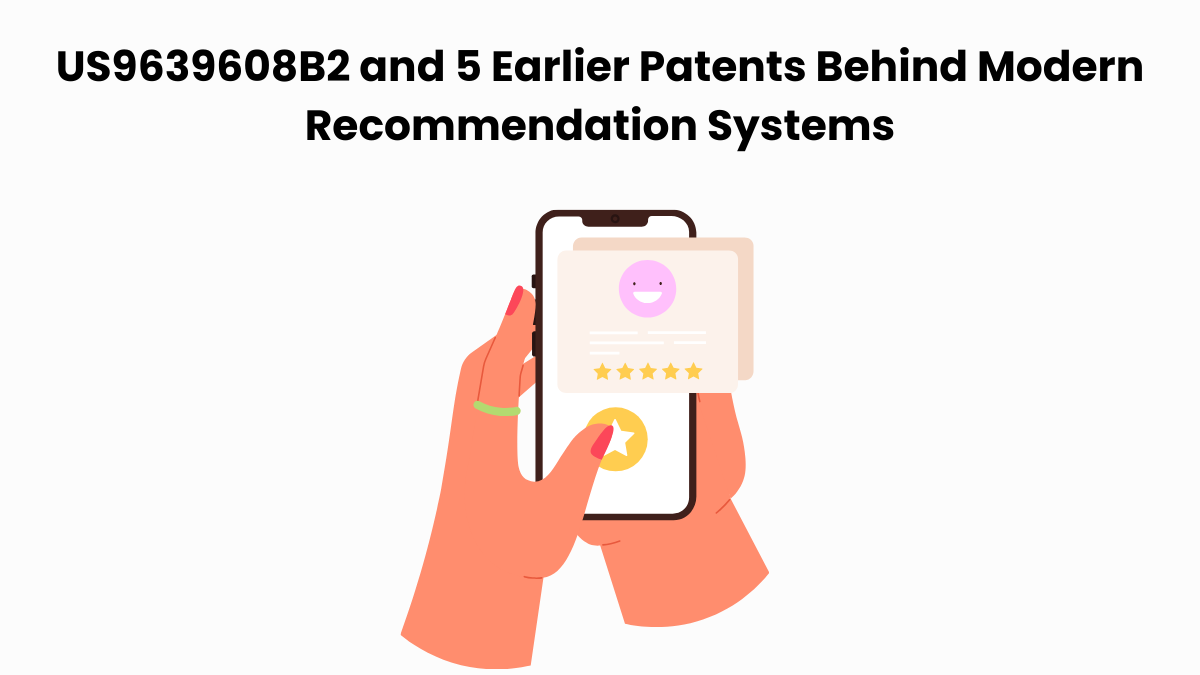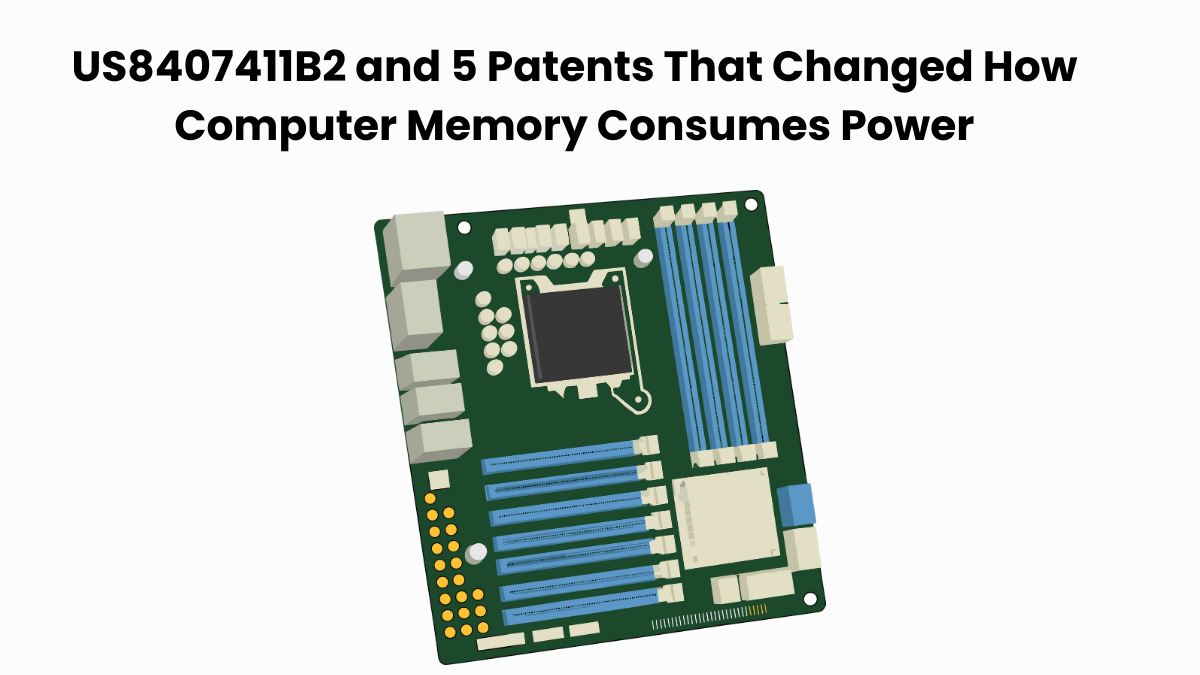Every voice call over Long Term Evolution (LTE) starts with hardware working quietly in the background. US11974173B2 is one such innovation.
Mentioned in the BrightSky LLC v. JV Connectivity Inc. case, this patent focuses on linking classic phones to LTE networks. It outlines a system that lets analog telephone devices connect through a controller that manages voice calls over LTE. Think of it as a smart bridge between old-school phone hardware and modern cellular tech.
In this piece, we make use of the Global Patent Search (GPS) platform to explore related technologies and similar system designs to US11974173B2. We’re not discussing courtroom details here, just the tech.
If you’re in telecom, product design, or follow trends in VoLTE infrastructure, this breakdown is worth your time.
Understanding Patent US11974173B2
Patent US11974173B2, titled “Wired Telephone to VoLTE Adapter,” presents a system that links analog telephones to LTE networks using a smart hardware interface. It enables legacy devices, like alarm systems, fax machines, or standard phones, to make VoLTE calls without replacing the original hardware. The adapter simulates a traditional telephone line while routing calls through a mobile LTE connection.
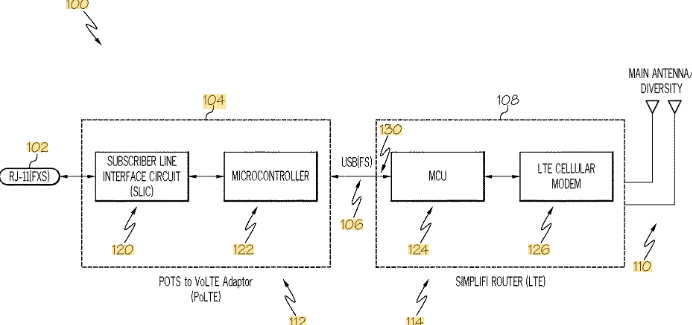
Source: Google Patents
Its four key features are
#1. Two-wire analog telephone interface: Connects traditional POTS devices using a standard RJ-11 port.
#2. Microcontroller with telephony controls: Handles echo cancellation, tone generation, and signaling for call setup and teardown.
#3. USB-to-LTE data link: Passes digital voice and modem control signals between the adapter and LTE modem.
#4. VoLTE voice path integration: Enables high-quality voice and modem data communication over cellular networks.
This patent offers a practical way to modernize analog telephony without overhauling existing infrastructure.
For example, retrofit kits now allow analog blue-light phone towers to connect via 4G LTE voice, illustrating the same technological bridging your article discusses.
Did you know? Just as legacy telephony needed smart fixes to work on today’s digital networks, US7774762B2 and Similar Software Portability Solution Patents shows how older applications can keep running on modern systems without being rewritten.
Similar Patents As US11974173B2
To explore the surrounding technology landscape for US11974173B2, we turned to the Global Patent Search tool. Below is a quick glimpse of the GPS tool in working.
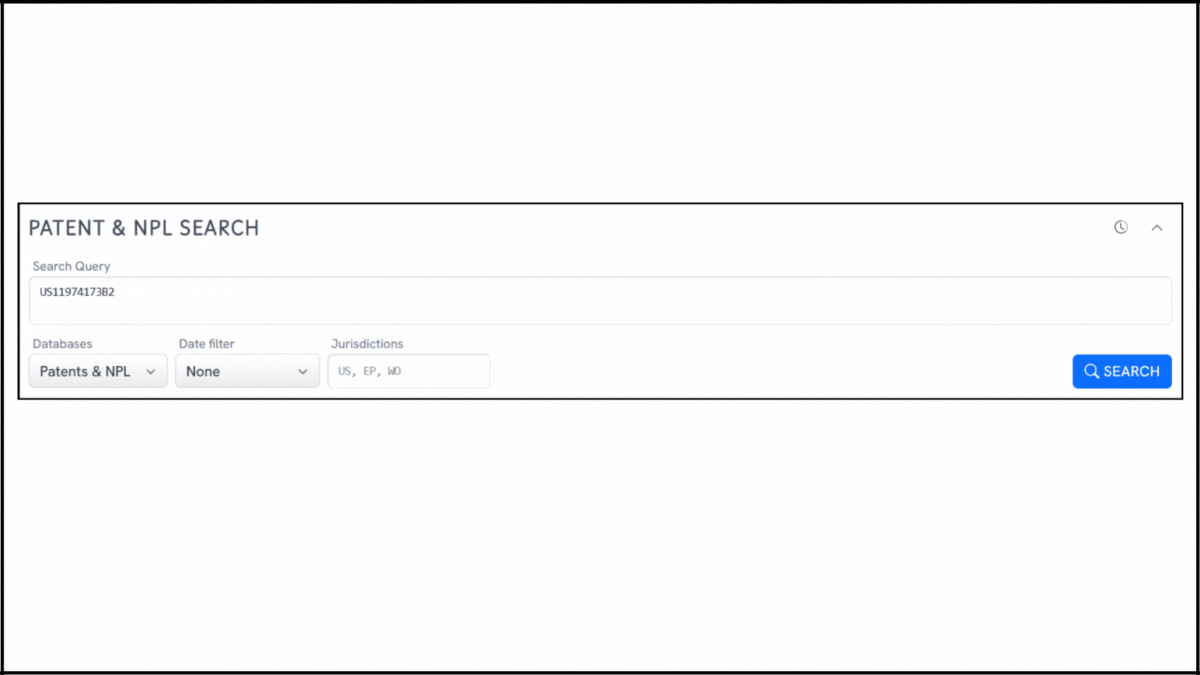
Source: Global Patent Search
Below is a look at how similar systems have tackled the challenge of connecting legacy analog telephony to digital network infrastructure. Each selected reference highlights how signal conversion, voice routing, or hybrid telephony solutions have been implemented across different architectures. This approach helps position US11974173B2 within a broader ecosystem of analog-digital telephony integration tools.
#1. US7508928B1
Published in 2009, this U.S. patent US7508928B1 explores a telephony interface system that connects analog phones to a voice-over-packet (VoP) network, while using the PSTN as a fallback.

Source: GPS
What this patent introduces to the landscape?
- VoP-to-PSTN fallback: The system routes calls over a packet-switched network by default but falls back to PSTN when needed.
- User action detection: The controller recognizes handset pickup and dialed digits to initiate calls dynamically.
- Embedded routing logic: A built-in controller handles signaling and network switching, minimizing user intervention.
How it connects to US11974173B2?
- Both systems act as bridges between analog telephony and modern voice networks.
- Each uses signal detection and digital processing to enable seamless voice communication over different mediums.
- They share the goal of extending analog hardware life by enabling compatibility with newer digital infrastructures.
Why this matters?
This patent adds historical depth to the context of US11974173B2. It demonstrates how hybrid systems have long aimed to maintain analog functionality while embracing digital voice networks. It helps frame US11974173B2 as part of a continuous evolution in analog-to-digital telephony solutions.
If you’re exploring how wireless systems process and route signals across different network layers, our US6813742B2 analysis offers a helpful parallel.
#2. CN201298865Y
CN201298865Y, published in 2009, this Chinese utility model presents a multi-access IPPBX system that supports 2G mobile, PSTN, and VoIP connectivity within a unified enterprise setup.

Source: GPS
What this patent introduces to the landscape?
- Triple-network integration: The system combines 2G cellular, traditional PSTN lines, and VoIP into one IPPBX platform.
- Modular gateway access: It uses FXO and FXS modules to connect to both public phone lines and internal analog devices.
- Enterprise-grade call switching: An Ethernet-based switch routes voice signals efficiently across all access types.
How it connects to US11974173B2?
- Both systems handle analog signals and route them into digital networks.
- Each uses modular hardware to maintain compatibility with legacy and modern infrastructure.
- They aim to simplify network transitions for users with mixed device environments.
Why this matters?
This reference shows how telephony solutions have adapted to multi-network demands. It expands the technical context of US11974173B2, highlighting how hybrid designs help businesses maintain analog devices while embracing digital voice systems.
A similar shift toward identity-driven communication appears in US11290428B2, which replaces traditional dial-in numbers with secure, personalized online links for joining digital meetings.
#3. CN101753741A
Published in 2010, this Chinese patent CN101753741A outlines a fused IPPBX system that integrates 2G, PSTN, and VoIP capabilities with advanced CPU-based call control.
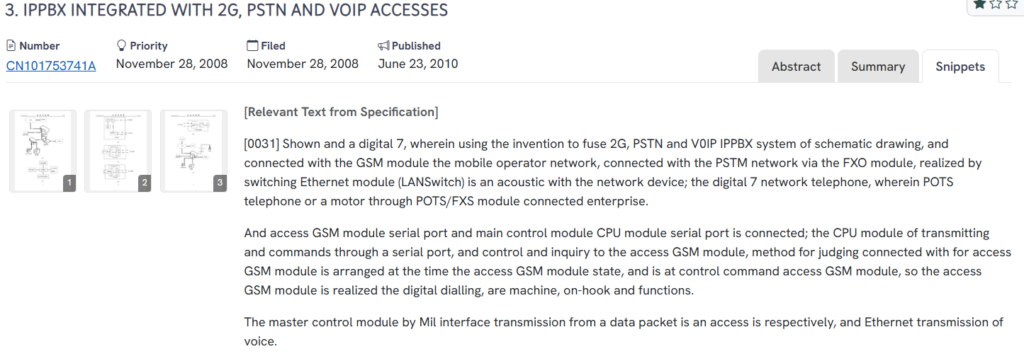
Source: GPS
What this patent introduces to the landscape?
- Unified network switching: The IPPBX handles voice routing across GSM, PSTN, and VoIP using modular gateways and Ethernet-based switching.
- Serial-controlled GSM module: A CPU module manages GSM module operations like digital dialing, answering, and on-hook detection through serial commands.
- Centralized command and control: The system coordinates all access modes via a master CPU and supports digital packet transmission over Ethernet.
How it connects to US11974173B2?
- Both patents enable analog telephony to function over digital and cellular networks.
- Each uses modular hardware interfaces (FXS/FXO or RJ-11) paired with a central processor for control.
- They aim to automate call handling and simplify transitions between access types.
Why this matters?
This patent shows another angle of hybrid telephony design. It complements US11974173B2 by emphasizing centralized management and modular connectivity: core traits in next-gen analog-digital telephony solutions.
A similar approach to interpreting and transporting signal paths shows up in our EP3016464B1 breakdown, which looks at how mobile networks discover and manage evolving voice and data traffic.
#4. CA2525471A1
Published in 2004, this Canadian patent CA2525471A1 presents a private telephone network that connects to multiple public networks, including VoIP, cellular, and traditional PSTN, via adaptive gateways.
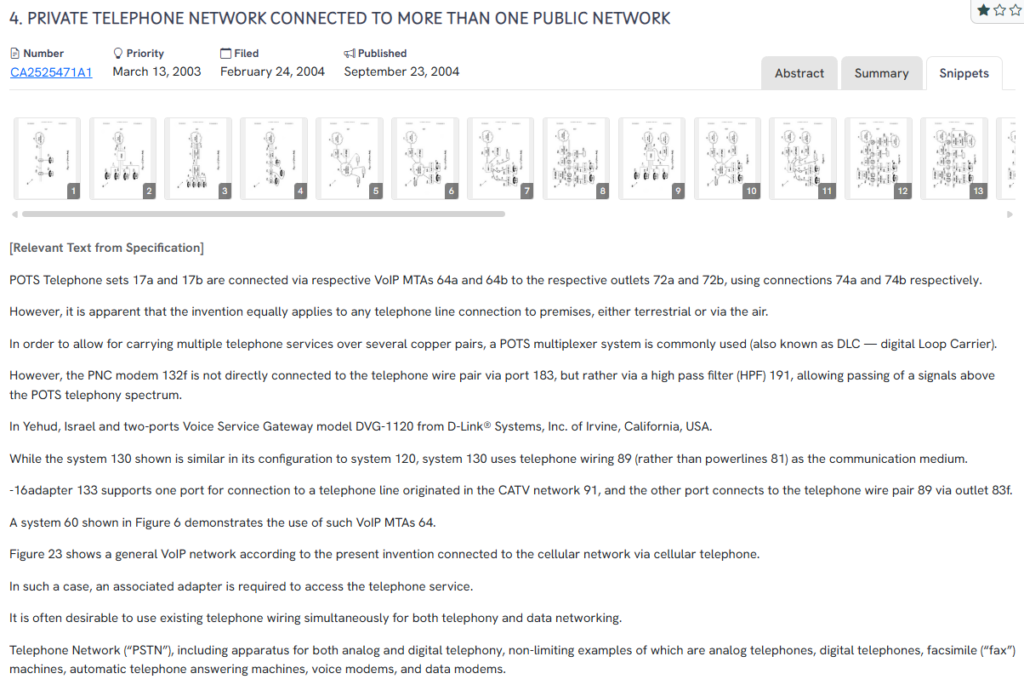
Source: GPS
What this patent introduces to the landscape?
- Multi-network telephony gateway: The system links private telephone lines to VoIP MTAs, cable telephony, PSTN, and even cellular services.
- Signal filtering for line sharing: High-pass filters are used to allow telephony and data signals to coexist on the same copper pair.
- Flexible adapter design: Includes support for analog and digital devices, such as fax machines, modems, and voice gateways across various mediums.
How it connects to US11974173B2?
- Both systems extend legacy POTS lines to modern networks through modular adapters.
- Each design emphasizes minimal infrastructure changes while maximizing device compatibility.
- The focus on signal routing and hybrid access aligns with US11974173B2’s purpose-built LTE adapter.
Why this matters?
This reference demonstrates the long-standing goal of converging multiple telephony standards. It reinforces US11974173B2’s position as part of an ongoing movement to unify legacy and modern communication systems under a single hardware solution.
#5. US20090122785A1
Published in 2009, this U.S. patent US20090122785A1 introduces a VoIP adapter that allows POTS phones to access advanced VoIP functions through a controller-managed signaling interface.

Source: GPS
What this patent introduces to the landscape?
- Dual-signaling interface: The adapter processes signaling messages from both the POTS phone and the IP network, handling media and call logic.
- VoIP command mapping: It supports advanced features like call hold and transfer using digit-sequence commands entered on a standard phone.
- Controller-based media switching: A central controller manages incoming and outgoing media between analog phones and IP networks.
How it connects to US11974173B2?
- Both systems bridge analog phones to digital voice networks with an adapter-based architecture.
- Each uses a signaling-aware controller to manage user inputs and network responses.
- The focus on enabling legacy phones to access advanced call features shows a shared design goal.
Why this matters?
This reference adds a functional layer to the analog-to-digital conversation. It highlights how adapters like the one in US11974173B2 can go beyond basic connectivity and enable advanced call handling, further integrating legacy systems into modern communication networks.
How to Find Related Patents Using Global Patent Search?

Understanding the broader innovation landscape around a patent can be essential for research, product planning, or spotting conceptual overlaps in emerging technologies. The Global Patent Search tool streamlines this process by uncovering similar inventions across geographies, industries, and timelines. Here’s how it works:
1. Enter the patent number into GPS: Drop in US11974173B2 and GPS transforms your input into a semantic query. Add keywords like “analog telephony LTE” to fine-tune your search.

2. Explore conceptual snippets: GPS extracts key excerpts from related patents, just like those shared earlier, to reveal functional and architectural similarities.

3. Identify structurally similar inventions
The tool surfaces patents with matching frameworks, modular adapters, and hybrid system designs, helping you see how others solved the same challenge.
4 Compare without legal jargon
GPS focuses on actual technology features and implementation details; no dense legal language, just real design insight.
5. Accelerate cross-domain research
Whether investigating VoLTE bridging, telephony adapters, or converged network systems, GPS makes it easy to explore parallels across domains.
With these capabilities, Global Patent Search offers a smarter and faster way to navigate the patent landscape and uncover meaningful technological parallels.
Disclaimer: The information provided in this article is for informational purposes only and should not be considered legal advice. The related patent references mentioned are preliminary results from the Global Patent Search tool and do not guarantee legal significance. For a comprehensive related patent analysis, we recommend conducting a detailed search using GPS or consulting a patent attorney.


